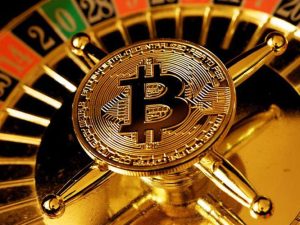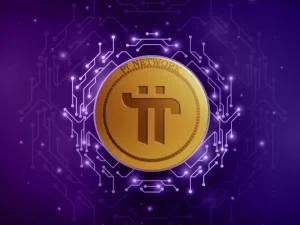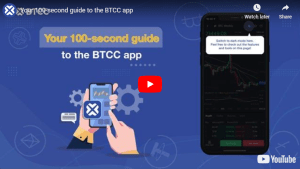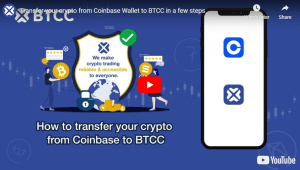What is Maple Finance (SYRUP)? Everything You Need To Know
The native coin of Maple Finance, a decentralised finance (DeFi) platform that debuted in 2019, is called SYRUP Crypto. Maple Finance offers transparent and overcollateralized loans by utilising blockchain technology to link liquidity sources with institutional borrowers. As a result, users that provide liquidity to the platform have the opportunity to earn income. Holders of the SYRUP cryptocurrency token can take part in governance choices and stake for rewards.
Binance listed SYRUP for spot trading on May 6, 2025, together with the stablecoins USDT and USDC. A 20% price hike was immediately caused by the announcement. A major turning point for SYRUP was moving from Binance Alpha, a testing stage for new projects, to full spot trading, which strengthened its expanding position in the cryptocurrency market.
/ You can claim a welcome reward of up to 10,055 USDT🎁\
What is Maple Finance?
One platform in the decentralised finance (DeFi) space that facilitates capital flow via secured, on-chain loan products is Maple Finance, which lends digital assets and links institutions to structured opportunities like yield-bearing. Platform users and institutional investors seeking loans or yield-generating opportunities in crypto lending pools can take use of the platform’s two-pronged approach to permissionless and know-your-customer (KYC) fronts.
The current marketplace’s delayed, expensive, and occasionally restrictive restrictions can make businesspeople and other investors feel shut out when they try to find alternatives to borrowing enough money to finance their growth. By providing a more efficient and adaptable alternative to the conventional capital market, Maple DeFi has helped institutions better manage their cash flow and take advantage of investment possibilities.
By providing institutions with undercollateralized loans, Maple’s digital lending protocol surpasses the capabilities of previous DeFi protocols. The Maple and Syrup lending pools only use cryptocurrencies that have passed stringent evaluations to back loans, and the yield sources are permissioned, so you know they’re safe and reliable. Unlike its rivals, Maple welcomes anybody looking to lend cryptocurrency to prime corporate borrowers as a liquidity provider or yield earner.
How Does Maple Finance Work?
Like previous DeFi projects, the Maple protocol relies on the involvement of cryptocurrency enthusiasts and operates on the Solana and Ethereum blockchains. The fact that it is mainly aimed at institutional lenders and business borrowers makes it slightly different from other DeFi protocols. Lenders, institutions, borrowers, pool delegates, and stakeholders are the main actors in the Maple ecosystem. Each of these groups has a unique role, which will be discussed later on.
Institutional Borrowers: Market makers, hedge funds, and a few cryptocurrency exchanges make up the bulk of institutional borrowers, and they use the platform’s aggregated resources to record their financial operations on the blockchain. After getting loans through the platform, approved borrowers pay an establishment fee that helps fund Maple’s DAO (the decentralised autonomous organisation) and pool delegates.
Pool delegates: Chosen by Maple Finance to ensure capital efficiency on the platform, this group checks borrowers’ credit and determines if they can repay the loans. In order to oversee lending pools, they collect data that affects the circumstances and terms of each loan; money for these pools comes from chosen liquidity policies.
Lenders: Delegates from the liquidity pools oversee the deposit of cash by lenders, who can then potentially earn a fixed yield on their investment. The interest rate isn’t the only incentive that lenders get; they also get MPL crypto rewards.
Stakers: Staking Balancer Pool Tokens (BPT) by holders acts as “loss capital” to offset potential losses in the case of a default. Staking MPL tokens and receiving a cut of the loan yield are two ways the platform compensates users for taking on risk with the loans.
/ You can claim a welcome reward of up to 10,055 USDT🎁\
What is SYRUP?
With Maple Finance at its core, SYRUP is a permissionless yield token made with the DeFi community in mind. The protocol’s users can profit from the platform’s yield by investing in large crypto-focused institutions’ over-collateralized loans. Lenders are exempt from know-your-customer (KYC) procedures prior to depositing funds and beginning to earn yields on SYRUP because the platform mostly adheres to DeFi.
Users of SYRUP can not only earn yield by depositing funds, but they can also earn Drips, the main way that ownership of the Maple DeFi ecosystem is distributed. Participating in various actions allows users to improve the quantity of Drips they earn. For example, users can use DeFi to leverage SyrupUSDC or one of their wallet integration partners to deposit funds into SYRUP.
All parts of the Maple ecosystem, including Syrup, are governed by the SYRUP token. Holders converted their tokens from MPL to SYRUP, which was supposed to replace the older token.
Tokenomics
SYRUP now serves as the native token of the Maple protocol and replaces the MPL token. Upon migration, the proposal was to convert 1 PML to 100 SYRUP, which ensured no dilution for existing MPL holders. The total supply of SYRUP is projected to reach 1.228 billion by September 2026, reflecting a planned 5% annual inflation.
The platform issued approximately 1.15 billion SYRUP during the migration, which included creating at least 1 billion SYRUP tokens during the MPL-to-SYRUP migration. The distribution of 100,000,000 tokens, planned for October 2024, was part of a well-organised inflation calendar. Here is a breakdown of how SYRP tokens were distributed:
- Supply of new SYRUP: 1,000,000,000 tokens
- Schedule of 10% inflation: 100,000,000 tokens
- 54,930,000 tokens from inflation to October 2024
- Supply is anticipated to reach 1,228,740,800 tokens by September 2026.
Listing on Binance
Maple Finance’s SYRUP was added on Binance’s Alpha list on May 6, 2025, and trading began at 15:00 (UTC), after being longlisted on the exchange. With its big user base and reasonably successful DeFi platform, the protocol and exchange stand to gain substantial volumes and widespread exposure. When it first opened for trading, the following pairings were available: SYRUP/USDT and SYRUP/USDC. Many more pairs will be added later.
/ You can claim a welcome reward of up to 10,055 USDT🎁\
Conclusion
With the overarching goal of utilising over-collateralization, Maple entered the financial sector to address a perceived need and provide a voice to economic actors marginalised by established institutions.
The institution’s total value of assets (TVL) has increased annually to more than $800 million. Accredited institutional investors in the institutional capital sector are driving the demand for DeFi products and high yields, as seen by the rise.
Another reason for the increase of SyrupUSDC’s user base is its recent introduction, which allows individual investors to gain access to institutional yields. Once everything is in place and institutional adoption increases, Maple products have a good potential of being used by users in the financial sector, including the credit card business, real estate, lending markets, and more.
FAQs
Is Maple Finance secure?
When it comes to DeFi institutional lending platforms, Maple Finance is one of the more secure options. While there may be inherent dangers in the cryptocurrency market, Maple has taken many precautions to ensure the safety of its users, including requiring Know Your Customer (KYC) information from borrowers and lenders and enforcing rigorous due diligence procedures by its Pool Delegate. There has been no sign of fraud since implementing these precautions, thus Maple may continue to boast about being a safe site.
What is the utility of the Maple Finance token?
Various parts of the Maple ecosystem make use of the Maple Finance token, or MPL. Staking MPL earns users a piece of the platform’s network fees, which can be used as passive income, but its primary function is as the platform’s governance token, giving holders the power to vote on proposals and participate in protocol decisions. You may also use the token to join or start your own lending pool on the site.
Who is Maple Finance’s founder?
In 2021, Maple Finance was established. Initiators include Joe Flanagan and Sidney Powell. Powell has been named CEO for the time being. Institutional banking and debt capital markets are Powell’s strong suits.
Is it wise to invest in Maple?
There is reason to be optimistic about Maple’s future growth, as it has already authorised loans worth over a billion USD and is still expanding. Although a definitive response is elusive, every astute investor should keep an eye on the most recent events, such as listing in Binance, since they should indicate a level of trust in the platform.
Why Trade Crypto on BTCC
Founded in 2011, BTCC is among the world’s oldest and most reliable bitcoin exchanges. Many traders use BTCC because it has established a solid reputation in the market for security and regulatory compliance over the years. The platform is especially well-suited for traders in North America and Europe, with presences in the US, Canada, and Europe.
In addition to bitcoin trading, BTCC provides traders with access to non-crypto assets including gold, silver, and U.S. equities through cutting-edge features like copy trading, perpetual futures, and tokenized stocks. Both novice and seasoned traders searching for a secure and regulated platform can benefit from BTCC’s range of offerings.
The firm’s products are designed to meet the needs and desires of both rookie and experienced traders. Here are five reasons for using the exchange:
- Numerous transferable assets
- Excessive trading leverage
- Strong copy trading capabilities
- Perfect security record
- Interface that is easy to use
- Accessible to traders in the US and Canada
[BTCC Bonuses and Special Offers]
(1) New User Welcome Reward: As a new user, you can claim a welcome reward of up to 10,055 USDT.
(2) Referral Program: You can earn up to 35% commission on your referrals, plus up to 10,060 USDT in rebates per referral.
How to Trade Crypto on BTCC?
This brief instruction will assist you in registering for and trading on the BTCC exchange.
Step 1: Register an account
The first step is to hit the “Sign Up” button on the BTCC website or app. Your email address and a strong password are all you need. After completing that, look for a verification email in your inbox. To activate your account, click the link in the email.

Step 2: Finish the KYC
The Know Your Customer (KYC) procedure is the next step after your account is operational. The main goal of this stage is to maintain compliance and security. You must upload identification, such as a passport or driver’s license. You’ll receive a confirmation email as soon as your documents are validated, so don’t worry—it’s a quick process.

Step 3. Deposit Funds
After that, adding money to your account is simple. BTCC provides a range of payment options, such as credit cards and bank transfers. To get your money into your trading account, simply choose what works best for you, enter the amount, and then follow the instructions.
- Fiat Deposit. Buy USDT using Visa/Mastercard (KYC required).
- Crypto Deposit. Transfer crypto from another platform or wallet.

Step 4. Start Trading
If you wish to follow profitable traders, you might go for copy trading, futures, or spot trading. After choosing your order type and the cryptocurrency you wish to trade, press the buy or sell button. Managing your portfolio and keeping track of your trades is made simple by the user-friendly interface.

Look more for details: How to Trade Crypto Futures Contracts on BTCC
BTCC FAQs
Is BTCC safe?
Based on its track record since 2011, BTCC has established itself as a secure cryptocurrency exchange. There have been no reports of fraudulent activity involving user accounts or the platform’s infrastructure. By enforcing mandatory know-your-customer (KYC) and anti-money laundering (AML) procedures, the cryptocurrency trading platform gives consumers greater security. For operations like withdrawals, it also provides extra security features like two-factor authentication (2FA).
Is KYC Necessary for BTCC?
Indeed. Before using BTCC goods, users must finish the Know Your Customer (KYC) process. A facial recognition scan and legitimate identification documents must be submitted for this process. Usually, it is finished in a few minutes. This procedure has the benefit of strengthening the security of the exchange and satisfying legal requirements.
Because their accounts will have a lower daily withdrawal limit, those who do not finish their KYC are unable to make deposits. It should be noted that those who present a legitimate ID without a facial recognition scan will likewise have restricted withdrawal options.
Is There a Mobile App for BTCC?
Indeed. For users of iOS and Android, BTCC has a mobile app. The exchange’s website offers the mobile app for download. Since both the web version and the mobile app have the same features and capabilities, they are comparable.
Will I Have to Pay BTCC Trading Fees?
Indeed. BTCC levies a fee for trade, just like a lot of other centralised exchanges. Each user’s VIP level, which is unlocked according to their available money, determines the different costs. The BTCC website provides information on the charge rates.
Can I Access BTCC From the U.S?
You can, indeed. According to its website, BTCC has obtained a crypto license from the US Financial Crimes Enforcement Network (FinCEN), which enables the cryptocurrency exchange to provide its services to investors who are headquartered in the US.
According to BTCC’s User Agreement document, its goods are not allowed to be used in nations and organisations that have been sanctioned by the United States or other nations where it has a licence.
BTCC Guide:
- How to Trade Crypto Futures Contracts on BTCC
- BTCC Guide-How to Deposit Crypto on BTCC?
- What is Crypto Futures Trading – Beginner’s Guide
- What is Leverage in Cryptocurrency? How Can I Trade at 100X Leverage?
- BTCC Review 2024: Best Crypto Futures Exchange
Crypto Buying Guides:
- How To Buy Bitcoin (BTC)
- How To Buy Picoin
- How To Buy Ethereum (ETH)
- How To Buy Dogecoin (DOGE)
- How To Buy Pepe Coin (PEPE)
- How To Buy Ripple (XRP)
Crypto Prediction:
- Ethereum (ETH) Price Prediction 2024, 2025, 2030 — Will ETH Reach $10,000?
- Ethereum Price Prediction 2024, 2025, 2030: How High Can ETH Go in 2024?
- Bitcoin (BTC) Price Prediction 2024, 2025, 2030 — Is BTC a Good Investment?
- Ripple (XRP) Price Prediction 2024, 2025, 2030 — Will XRP Reach $1 After SEC Lawsuit?
- Pi Coin Price Prediction 2024,2025,2030 — Is Pi Coin a Good Buy?
- Pepe (PEPE) Price Prediction 2024, 2025, 2030 – Will PEPE Reach $1










